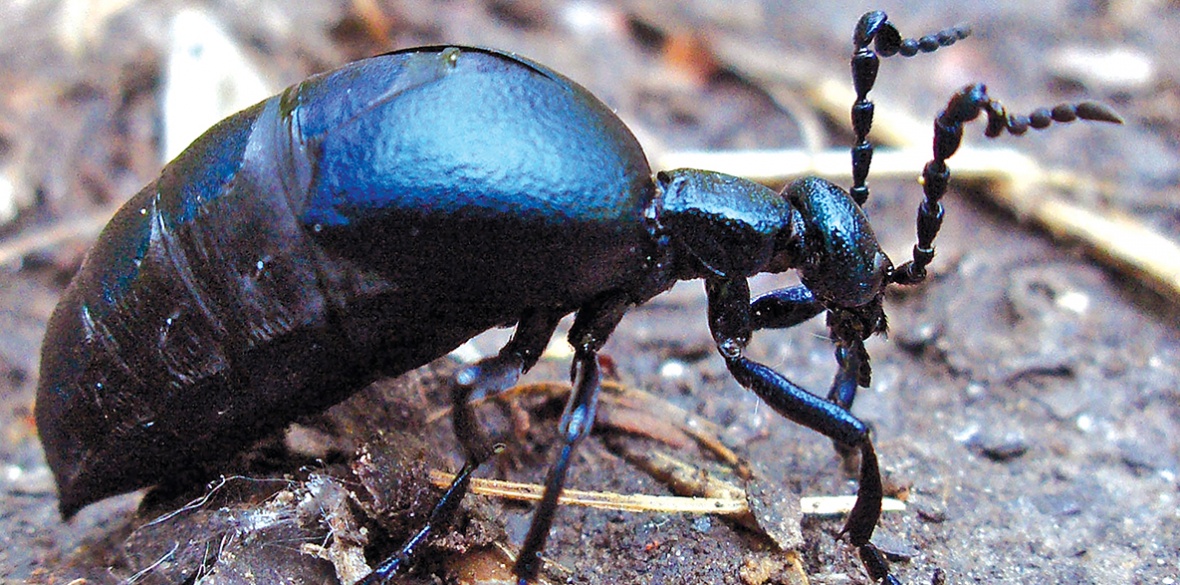This is the last article you can read this month
You can read more article this month
You can read more articles this month
Sorry your limit is up for this month
Reset on:
Please help support the Morning Star by subscribing here
ABOUT 60-plus years ago when I was a snotty-nosed schoolboy in shorts and a cap, I did some things that make me feel very embarrassed today. I kept all sorts of native wild animals in cages.
Today it would be illegal, and rightly so, but these were days before the words environment, sustainability or conservation were widely heard about.
I kept caterpillars and watched them turn into butterflies and frogspawn that became tiny froglets. Newts were a real favourite, along with lizards, slowworms and one very handsome yard-long grass snake.
I kept shiny black beetles in a matchbox to race with schoolmates. All very embarrassing now, but I know it is where my lifelong love of nature came from.
The beast me and all my mates wanted to catch and keep was the stag beetle (Lucanus cervus). These were big ones — Britain’s biggest beetle.
A male, including its impressive antlers, could reach 3.5in (90mm) females 2.5in (60mm). A matchbox would be no good for one of these.
They were always rare and found mainly in the south and south-east of England. London and its suburbs had some of the biggest populations — and I was a London boy. Today they are much rarer but London is still one of the most likely place to spot one.
Stag beetles have a peculiar life cycle. The larvae live in soil, eating rotting wood for five to six years but the adult beetles only live for up to eight weeks, drinking only tree sap and no solid food. The warmer temperatures of late spring encourage them to look for a mate. As soon as the female lays her eggs, in or near rotten wood, she dies.
The stag beetle is now severely threatened mainly as a result of habitat loss, rather than capture by small girls and boys.
Since they spend such a long time in the larval stage, they are also vulnerable to natural predation. Like hedgehogs, far too many are killed by cars on roads.
The most noticeable features of the male stag beetles are the large antler-like pincers, which give the beetle its name.
The pincers are used during the mating season to fight with other males over territory. Each male tries to grab his opponent between his pincers, and then throw him down.
The fully grown male stag beetles can normally be seen flying at dusk between May and August. They look quite unstable in flight, and their wings make a loud, almost clicking, buzzing sound.
The females can be recognised by the much smaller pincers. Although both the male and female stag beetles can give you a pinch, they are quite harmless.
The larvae (grubs) which hatch from the eggs have cream-coloured bodies with an orange head and orange legs. They live and feed in rotting wood for up to six years.
When fully grown, the larvae leave the wood to pupate in soil. This occurs in the summer, while the weather is still warm.
The pupa remains in this state until the following spring when it emerges as a huge adult beetle.
Out walking recently I came across another older and smaller friend from those beetle studying days. It was large but only half the size of a stag beetle. This one was a black and shiny oil beetle, and it was busily burrowing into the rough footpath ahead of us.
The oil beetle (Meloe proscarabaeus) is quite spectacular-looking. It is about an inch-and-a-half (40mm) long, and its body has a beautiful, very shiny dark, almost black, shell but with a bluish-violet tint, almost like oil on water.
The jointed body looks like it is made of shiny ebony beads, large ones for its head, thorax and abdomen, and tiny strings for its legs and antennae.
It has a sausage-like abdomen bursting out of the wing cases on its back. Oil beetles are large, charismatic and somewhat strange-looking insects that have been described — as has your writer — as looking like a fat man whose waistcoat isn’t quite big enough to button up properly.
In the case of the beetle the “waistcoat” is the short wing cases that do not fully cover the beetle’s abdomen.
Four of Britain’s native oil beetles are already extinct, and data collected by Buglife — The Invertebrate Conservation Trust — showed that the remaining four species are seriously threatened too.
Like so many of our insects, they are under threat from changes in land management, industrialised agriculture and the trend to tidy up the countryside and gardens.
Oil beetles can still be fairly common in some places and have an extraordinary life-cycle which is intricately entwined with solitary bees.
Juvenile oil beetles are tiny, louse-like creatures called triungulins. These tiny juveniles look nothing like their parent beetles.
They emerge in spring and climb up grasses and plant stems to lie in wait on flower heads for visiting bees.
The take advantage of the bees, firstly by hitching a lift on their back — just like us catching a cheap flight to the sun.
When the bee gets home to its burrow the triungulin hops off, makes itself at home, and starts eating the food collected by the bee for its own young.
Yes, these triungulins are the insect equivalent of a cuckoo in the nest. The larval oil beetle then develops within the bee burrow and, finally, the following year, it emerges as a fully grown adult beetle to start the amazing cycle all over again.
Because of this complex life cycle, oil beetles can only thrive where there are large populations of solitary bees.
A decline in the population of bees, for example through the loss of wildflower habitat, can quickly lead to the loss of oil beetles. Just another example of how one aspect of wildlife can interact with something quite different.
Oil beetles actually act as an early warning system that habitat quality may be declining. For solitary bee and oil beetle populations to thrive we need to ensure the long-term maintenance of wildflower-rich, semi-natural habitats.
Oil beetles are normally found on such wildflower sites with a succession of nectar sources through the spring and early summer such as unimproved grasslands and footpaths through glades or rides in woodlands. South-facing slopes with well drained soils are particularly favoured.
You will usually find oil beetle sites where cattle or sheep or wild animals such as deer or rabbits keep the grass short. Well-used footpaths can also have well-worn short grass and, as I found, they are often good places to spot these shiny black insects.
If you do see one resist the temptation to pick it up — you might get squirted with the oily irritant that gives the beetle its popular name.
Britain has around 270 species of bee, under 250 of which are solitary bees. These bees can be amazingly effective pollinators and, as the name suggests, tend not to live in colonies like bumblebees and honey bees.
Solitary bees in Britain are highly diverse, therefore so are their nesting habits. The majority of British species nest in the ground, excavating their own nest.
The female builds the nest by herself. She chooses a suitable piece of ground in which to nest and uses her body to dig out a nesting chamber.
She adds pollen to the chamber, which is often moistened with nectar, and lays an egg. She then seals off that section of the nest before moving on to the next chamber. No wonder they are so popular with oil beetle squatters.
Most unusual are snail shell nesting bees, of which we have three species in Britain. They use chewed up leaves to seal off each section in the empty snail shells and often camouflage the shell in some way.
Ain’t nature wonderful, with so many species relying on other species to thrive. I never get tired of watching them but these days I never even think of taking them home in a matchbox.










